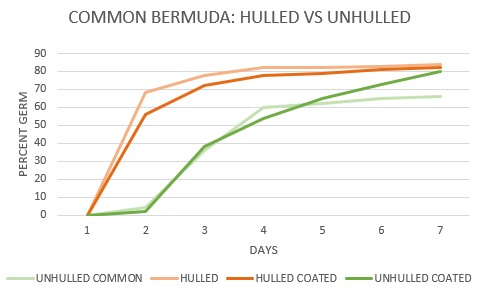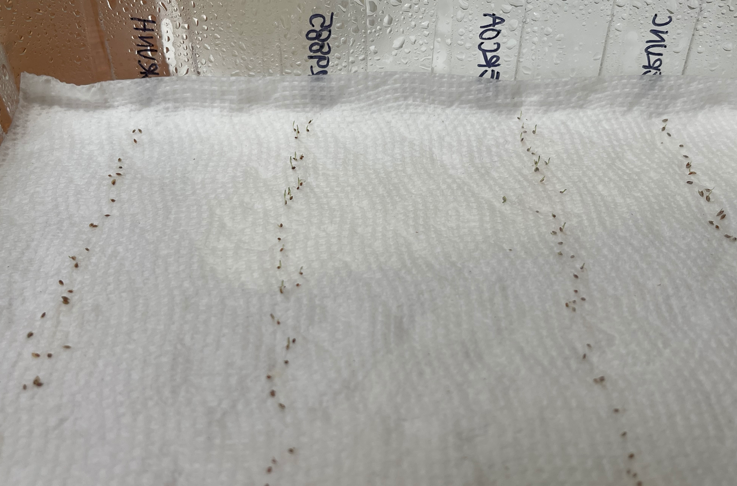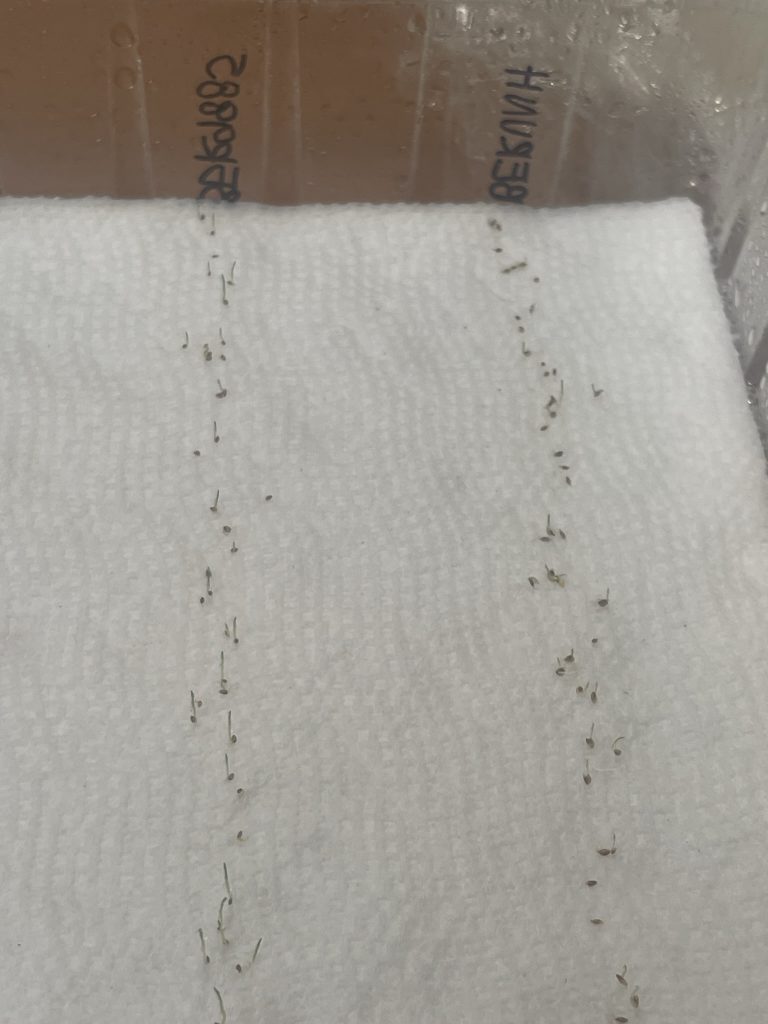One of the first questions we ask customers when they ask for Bermuda grass seed is “Do you want hulled or unhulled seed?” This usually leads to the question, “What’s the difference?” The hull of the seed is the outer shell or covering which protects the seed on its journey to germination. Hulled seed has that shell removed, and unhulled seed has had the shell removed. Let’s look at how removal of the hull affects germination times.
When a seed has been hulled (hull has been removed) it is more sensitive to environmental factors like moisture and temperature. Hulled seed is not protected by the shell, so it will try to germinate right away, which can be a recipe for disaster if planted at the wrong time. If hulled seed is planted too early, there is a good chance that the seed/seedling may develop fungal infections, rot, or have poor vigor as it tries to grow in temps that are too cool and not supportive of vigorous growth. In the early spring, it is suggested to use unhulled seed because the protective hull around the seed will allow it to ‘wait out’ the cool temperatures and germinate when the soil temperatures are above 65-75 degrees. Later in the season when soil temperatures are already above 65-75 degrees is when the hulled Bermuda seed can be safely planted for optimal germination and success.
So, what’s the difference in time to germination between hulled and unhulled Bermuda? Let’s take a look at what I’ve found about the germination times when in these ideal conditions.
The main difference that is mentioned when talking about hulled vs unhulled is that unhulled will take more time to germinate. This is true, but the range of time varies with different environmental factors. To even the playing field, I’ve created a controlled environment to observe hulled and unhulled Bermuda and record their germination times to get a better understanding on what the time difference really is. Over the course of a few trials the answer was clear: hulled does in fact germinate faster, but only by a few days.

This graph shows the comparison of days and percent germination. The hulled seed began germinating very quickly, reaching 50% germination in 2 days. The unhulled seed germinated slower, reaching 50% germination by day 4. By day 4, hulled seed reached its maximum germination percentage, and unhulled reached its max by day 7. Roughly, we could say that unhulled Bermuda seed is about 3 days behind hulled Bermuda seed. With all other factors being equal, the delay is due to the unhulled seed having to germinate through that outer seed coat which takes a little more time.


In general, we recommend planting unhulled Bermuda grass seed when soil temperatures are below 65-75 degrees, so the shell will protect the seed until conditions are right. When soil temperatures reach at least 65-75 degrees, it is safe to plant hulled Bermuda grass seed. Unhulled seed can be planted any time of year, but should be expected to be roughly 3 days behind hulled seed in germination time when planted during the warm season.